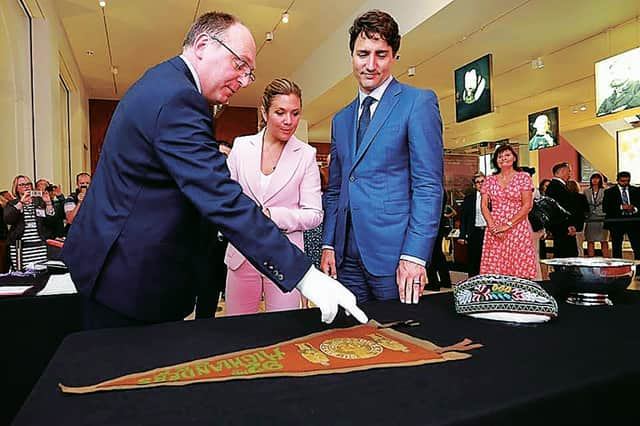National Museums Scotland returns tribal skulls to Canada


After a five-year campaign, National Museums Scotland (NMS) has formally repatriated the remains of two members of the long-lost Beothuk people.
The skull of Nonosabasut, a chief of the indigenous tribe native to Newfoundland, along with that of his wife, Demasduit, arrived in the province earlier this month, where a special ceremony was held to welcome their return.
Advertisement
Hide AdAdvertisement
Hide AdThe remains were taken from their resting place and ultimately sent to Scotland by William Cormack, a Scots-Canadian explorer who studied at the University of Glasgow and the University of Edinburgh.
They were shipped to Robert Jamieson, a professor of natural history at Edinburgh, in 1828, and eventually made their way into the collections of the National Museum of Scotland.
But as well as the skulls, Cormack sent home a slew of funerary objects, which signified the important role Nonosabasut and Demasduit held in their community.
For the moment, the items remain in the ownership of the NMS, but officials in Canada are hopeful they too will be returned.
According to Ingeborg Marshall, a historian of the Beothuk people who has studied their origins and ethnography, the objects taken by Cormack from the sepulchre included a canoe replica made out of birch bark, a pelisse, or dress, belonging to the couple’s infant daughter, two human figurines, a wooden replica of a bird and iron pyrites as well as various dishes and cups.
In her book chronicling the Beothuks’ all-but-forgotten past, Marshall said the choice of items for the burial – as well as the site itself – betrayed the social standing of Nonosabasut and his wife.
“This tomb was extremely elaborate relative to the commonest mode of internment where the body was wrapped in birch bark, placed on the ground, and then covered with a heap of stones,” she explained. “The care taken in the disposal of Nonosabasut and his family, and the numerous gifts deposited with them, indicate special status.”
A leader of his people as they neared extinction thanks to the actions of Sir Charles Hamilton, a British naval officer who served as the governor of Newfoundland, Nonasabasut was murdered in 1819 while trying to prevent the abduction of Demasduit by John Peyton, an English fur trader, supposedly in retaliation for an alleged theft by members of the tribe.
Advertisement
Hide AdAdvertisement
Hide AdShe was ultimately captured and died the following year of tuberculosis. The couple’s niece, Shanawdithit, who worked as a servant for the Peytons, was the last known member of the Beothuks. She died in 1829.
A spokesman for the heritage department of the Canadian government said it was “grateful” for the return of the remains of Nonosabasut and Demasduit, which were “important” to the native peoples of Newfoundland and Labrador.
He added: “The government of Canada is committed to reconciliation with indigenous peoples and understands how important gestures such as this are to that healing process. The NMS was not in a position to return the burial artefacts at this time, we look forward to further collaboration.”
An NMS spokeswoman said: “The transfer of human remains is guided by our human remains in collections policy, the scope of which does not cover associated material.
“The Beothuk material we hold consists of: a model birch bark canoe, two birch bark dishes, and a birch bark drinking cup. Any formal request to transfer items which are not human remains is considered on a case by case basis.”
Comments
Want to join the conversation? Please or to comment on this article.